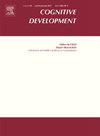Adolescents’ beliefs about caste-essentialism and their social location in Nepal
IF 1.8
3区 心理学
Q3 PSYCHOLOGY, DEVELOPMENTAL
引用次数: 0
Abstract
Social essentialism plays a significant role in legitimizing power imbalances within hierarchical societies, such as the caste system. We investigated whether adolescents endorsed caste essentialist beliefs and whether these beliefs about the stability of caste correlate with their perceived social mobility and social location (caste, SES). We interviewed 590 students between the ages of 10 and 18 years (Mage = 14 years; SDage = 1 year 7 months) of grades 6–10 from 25 school classes in Nepal to assess their caste essentialist beliefs with a switched-at-birth task and measured their perceived social mobility in terms of perceived feasibility regarding marriage to a higher caste. In line with our assumptions, adolescents of the highest caste group showed stronger essentialist beliefs regarding both higher and lower caste when compared to adolescents from the other caste groups and believed that an individual’s caste would not change even when switched at birth. Adolescents of the highest caste and from higher-SES backgrounds expressed stronger essentialist beliefs than their peers. Caste essentialist beliefs and perceived feasibility regarding marriage to a higher caste were significantly correlated. However, adolescents’ social location did not play a significant role in their perceived feasibility of marriage to a higher caste. Overall, they expected low social mobility concerning marriage. We discuss the complex associations between caste essentialism, social mobility beliefs and social location during adolescence.
尼泊尔青少年对种姓本质主义的信仰及其社会定位
社会本质主义在使等级社会(如种姓制度)中的权力不平衡合法化方面发挥着重要作用。我们调查了青少年是否认同种姓本质主义信仰,以及这些关于种姓稳定性的信仰是否与他们感知到的社会流动性和社会位置相关(种姓,SES)。我们采访了来自尼泊尔25个班级的590名年龄在10到18岁之间(年龄= 14岁;年龄= 1岁7个月)的6-10年级 学生,通过出生时转换的任务来评估他们的种姓本质主义信仰,并根据他们对与更高种姓结婚的感知可行性来衡量他们感知的社会流动性。与我们的假设一致,与其他种姓群体的青少年相比,最高种姓群体的青少年对高种姓和低种姓都表现出更强的本质主义信念,并且认为个人的种姓即使在出生时转换也不会改变。最高种姓和较高社会经济地位背景的青少年比同龄人表现出更强烈的本质主义信仰。种姓本质主义信仰与与高种姓婚姻的感知可行性显著相关。然而,青少年的社会地位并没有在他们认为与高种姓结婚的可行性中发挥重要作用。总体而言,他们预计婚姻方面的社会流动性较低。我们讨论了种姓本质主义、社会流动性信念和青少年社会位置之间的复杂联系。
本文章由计算机程序翻译,如有差异,请以英文原文为准。
求助全文
约1分钟内获得全文
求助全文
来源期刊

Cognitive Development
Multiple-
CiteScore
3.20
自引率
5.60%
发文量
114
期刊介绍:
Cognitive Development contains the very best empirical and theoretical work on the development of perception, memory, language, concepts, thinking, problem solving, metacognition, and social cognition. Criteria for acceptance of articles will be: significance of the work to issues of current interest, substance of the argument, and clarity of expression. For purposes of publication in Cognitive Development, moral and social development will be considered part of cognitive development when they are related to the development of knowledge or thought processes.
 求助内容:
求助内容: 应助结果提醒方式:
应助结果提醒方式:


